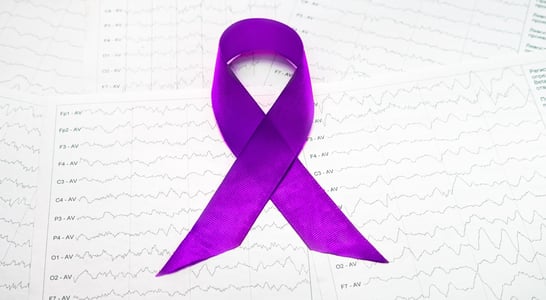
Sepsis Awareness Month
Join or host an event, educate yourself, and raise awareness about the causes and signs of sepsis. It could save your life or the life of another someday.
September has been designated as Sepsis Awareness Month by Sepsis Alliance since 2011. Every September since, the organization has invited healthcare professionals and individuals in all areas of medicine, as well as businesses and organizations, to help raise awareness of sepsis and save lives. The month is all about letting people know about the symptoms and signs of sepsis so that people can act quickly and get the help that they need.
What Is Sepsis?
Sepsis is a life-threatening reaction to an infection. It can happen due to any infection, but the germs that most commonly trigger it are bloodstream infections, kidney infections, abdominal infections, and pneumonia. It is sometimes referred to as blood poisoning or septicemia. It occurs when your immune system has an overreaction to an infection, and so it begins damaging the organs and tissues in your body. You cannot catch sepsis from another person.
There are three stages of sepsis. There is sepsis, severe sepsis, and sepsis shock. A lot of people experience sepsis while they are in the hospital recovering from a procedure. However, this is not always the case.
Sepsis Symptoms
One of the most important things to do in honor of Sepsis Awareness Month is to educate yourself about the different sepsis symptoms so that you know what to look out for. You could potentially save a life!
Symptoms of Sepsis
There are a number of different sepsis symptoms. This includes the following:
- A confirmed or probable infection
- A breathing rate that is above 20 breaths per minute
- A heart rate that is higher than 90 beats per minute
- A temperature that is below 96.8ºF (36ºC) or a fever above 101ºF (38ºC)
Symptoms of Severe Sepsis
Severe sepsis happens when there is organ failure. Some of the symptoms that are associated with this are as follows:
- Extreme weakness
- Unconsciousness
- Chills because of a fall in body temperature
- Abnormal heart functions
- Issues breathing
- Low platelet (blood clotting cells) count
- Changes in mental ability
- Decreased urination
- Patches of discolored skin
Symptoms of Septic Shock
Septic shock symptoms include all of the symptoms that have been mentioned above. However, the individual will also have very low blood pressure.
Why Education Yourself About Sepsis Is So Important
It is no exaggeration to say that you can save lives by educating yourself about sepsis. Sepsis is potentially life-threatening. The illness ranges from mild to severe. In mild cases, there is a much higher rate of recovery. Therefore, by educating yourself about this condition and spotting the signs early, there is going to be a much better chance of a recovery being made.
Cases of severe sepsis are very worrying, to say the least. Plus, even those who recover are going to have a higher risk of infection in the future as well. Plus, complications can arise due to septic shock or severe sepsis. This can include the formation of small blood clots, which can block the flow of oxygen or blood to your vital organs and other areas in the body. This can increase a person’s risk of tissue death and organ failure.
Shocking Sepsis Statistics
- One in ten deaths associated with childbirth and pregnancy are because of maternal sepsis.
- It is estimated 1.2 million children and three million newborns suffer from sepsis around the year per year.
- Sepsis is believed to impact more than 30 million people around the world every year.
- It is believed that sepsis leads to six million deaths per year worldwide.
(World Health Organization)
How To Observe Sepsis Awareness Month
There are a number of different ways that you can observe Sepsis Awareness Month. Here are some suggestions:
Help to spread the word
One of the main aims of Sepsis Awareness Month is to help people become more aware of this condition and the symptoms that are associated with it. This is something that we can all help to play a part in. You can easily download handouts and infographics online, which you can give to people to help them get a better understanding of the condition. You can also post messages on social media to help your friends and followers know more about sepsis.
Fundraise
Another way to observe Sepsis Awareness Month is to fundraise. Raising money and donating it to a sepsis charity can make a massive difference. There are lots of different ways you can fundraise. For example, you can make craft items and donate the profit (or a percentage of the profit) to sepsis awareness. Other options include getting your business to participate in a dress-down day or having a bake sale. After all, cake never fails! You can gain momentum for your event by posting about it online and setting up an online donations page so that you do not have to collect all money in cash.
Host an event
How about hosting your own event for sepsis awareness in September? If you’re stuck for some ideas, don’t panic; we’ve got you covered here too! You could do a 5k walk or run, helping to raise awareness and funds for sepsis. All attendees can wear a T-shirt with Sepsis Awareness on the front. If you’re looking to host something on more of a smaller scale, rather than a community event, why not get your friends and family around for an evening of appetizers and wine tasting? You can share your knowledge about sepsis and ask attendees to donate. There are so many different events that you can arrange in order to get people involved; from a cook-off to a yoga class at your local part. It is all about thinking of something that is fun and gets people involved, and then making sure you weave awareness and/or donations into the mix so that the event contributes to sepsis awareness.
Get your Sepsis Awareness SWAG
If you head to sepsis.org, they actually give away the likes of symptoms cards, educational brochures, posters, stickers, pins, and ribbons, which can all be used to help raise awareness about the condition.
Also in ...
View all holidaysGinger Cat Appreciation Day
Though they have a reputation for being total doofuses, ginger cats are actually—wait no, that’s right. Give your ginger doofus a big hug and some cat treats.
National Tofu Day (UK)
Try a healthier, often more eco-friendly option in your meals instead of meat. Try tofu stir-fry, tofu in taco bowls, or even a sweet, moist tofu-based dessert.
We think you may also like...
International FND Awareness Day
Learn and raise awareness about FND, or Functional Neurological Disorder, a poorly understood and rarely talked about disorder affecting many.
World Cerebral Palsy Day
Join or host an event, or donate your time or money to understanding cerebral palsy and supporting research and resources for this sometimes debilitating disease.
SUDEP Action Day
SUDEP is a sudden death that affects those with epilepsy. While there is no cure, awareness can lead to prevention and better treatments.








